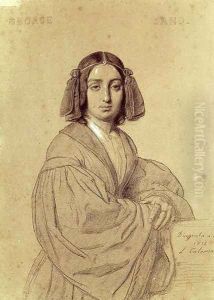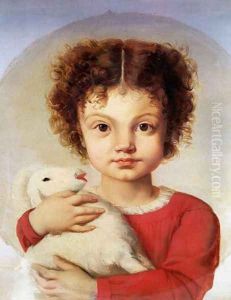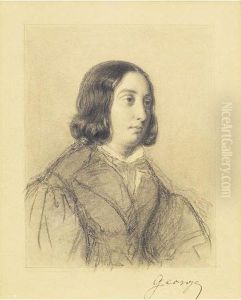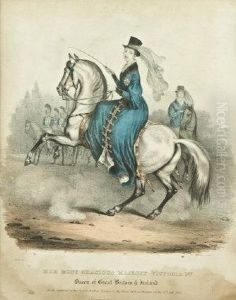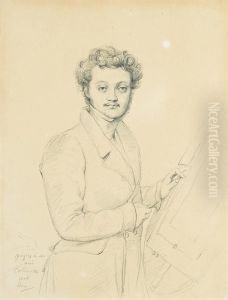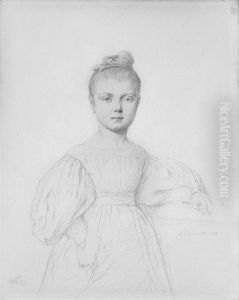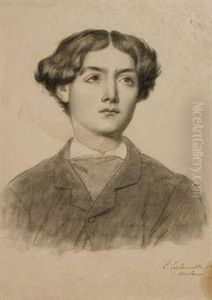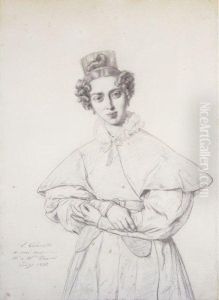Luigi Calamatta Paintings
Luigi Calamatta was an influential Italian engraver and lithographer born on April 21, 1801, in Civitavecchia, near Rome. His artistry was recognized early on, and he initially studied at the Accademia di San Luca in Rome. Calamatta's skills flourished under the tutelage of the renowned engraver Giuseppe Longhi, who greatly influenced his style and technique.
In 1822, Calamatta moved to Paris, which was then the epicenter of artistic innovation in Europe. There, he further honed his craft and was exposed to the works of the leading artists of the time. He became particularly known for his mastery of the stipple technique, which involves creating tonal effects by engraving numerous small dots. This method allowed for a remarkable level of detail and subtlety in his prints, distinguishing his work from that of his contemporaries.
Calamatta's engravings were highly sought after, and he gained fame for his reproductions of paintings by prominent artists such as Raphael and Ingres. His engraving of Ingres's painting 'La Grande Odalisque' is particularly celebrated. His work not only contributed to the spread of neoclassical art but also played a crucial role in the revival of interest in the Italian Renaissance masters during the 19th century.
Beyond his achievements as an engraver, Calamatta was also an influential teacher. In 1835, he was appointed as the professor of engraving at the École des Beaux-Arts in Paris, where he taught until 1863. Through his guidance, he shaped a generation of European engravers, propagating his methods and standards of excellence.
Calamatta returned to Italy in his later years and continued to work and teach. His engravings remain a testament to the skill and artistry of printmaking in the 19th century. Luigi Calamatta passed away on March 31, 1869, in Milan. His legacy endures through his remarkable prints and the impact he had on his students, many of whom became notable artists in their own right.
